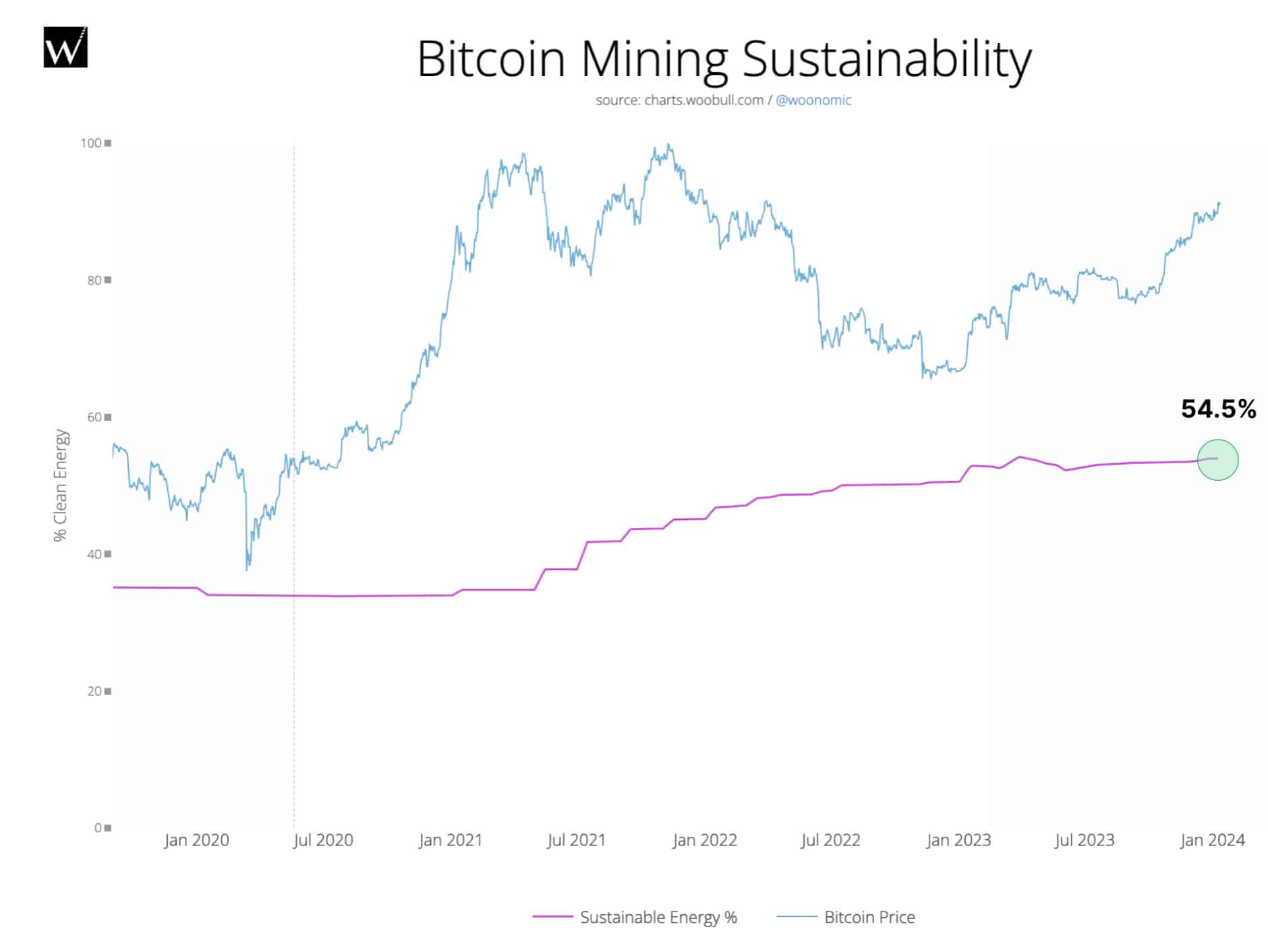Bitcoin Mining Using Sustainable Energy With a Record High of 54.5% in 2023
Sustainable energy use for Bitcoin (BTC) mining reached an all-time high of 54.5% in 2023, a 3.6% increase throughout the calendar year.
The analysis, conducted by The Bitcoin ESG Forecast, compared Bitcoin’s sustainable energy mix to other industries using publicly available data over the past four years.
The results indicate that Bitcoin mining currently ranks as the largest consumer of sustainable energy among subsectors.

Source: The Bitcoin ESG Forecast
Furthermore, the industry has made notable progress in increasing its reliance on sustainable energy sources, surpassing other global sectors.
Methane Emissions Power Off-grid Bitcoin Mining
One significant finding concerns the use of off-grid Bitcoin mining operations powered by methane emissions.
The research identified that small oil producers in Canada and the U.S. pay for permits to flare natural gas. Some of them also release methane directly, which is challenging to detect.
However, certain mining companies have adopted a more environmentally conscious approach. This happens through using vented methane to generate electricity for Bitcoin mining.
This practice reduces the environmental impact compared to venting the gas into the atmosphere.
As a result, the Bitcoin network now mitigates 7.3% of its emissions without relying on offsets. This is a new record high and surpasses all other industries in non-offset-based emission mitigation.
The report also mentioned some additional advancements in off-grid renewable mining. One example is Tether’s expansion into hydro mining in Latin America and the discovery of more off-grid methane-mitigating mining operations.
These developments have contributed to Bitcoin’s increased reliance on sustainable energy sources.
Following the mining bans in China and the effective prohibition in Kazakhstan, many miners have shifted their operations to greener grids in North America or sustainable off-grid locations.
The report indicates that global grids are gradually becoming greener at 0.7% annually, resulting in a 29% improvement in emission intensity for on-grid Bitcoin miners compared to 2021.
Major Miners Brace for Upcoming Halving Event
Leading cryptocurrency miners are bracing themselves for the challenges ahead as the mining industry prepares for a major transformation with the 2024 Bitcoin halving event.
Asset manager CoinShares analysis suggests that Riot (NASDAQ: RIOT), TeraWulf (NASDAQ: WULF), and CleanSpark (NASDAQ: CLSK) are among the best-positioned companies to weather the impending storm.
The Bitcoin halving event, slated for April 2024, entails a reduction in the block reward given to miners by half, leading to a decrease in the rate of new Bitcoin creation.
This deflationary policy is designed to control the network’s supply. While this reduction in rewards is part of Bitcoin’s intrinsic design, it presents miners with a unique set of challenges.
CoinShares’ analysis paints a clear picture of what miners can expect post-halving.
The cost of production and cash costs per Bitcoin, which were approximately $16,800 and $25,000 in the third quarter of 2023, are expected to surge to $27,900 and $37,800, respectively.
Analysts project that the average production cost for crypto miners post-halving is going to be around $37,856.
These anticipated cost increases stem from the reduction in rewards and the need for miners to expand their operations to remain profitable.
“[…] we think Riot, TeraWulf, and CleanSpark are best positioned going into the halving,” the report said.







